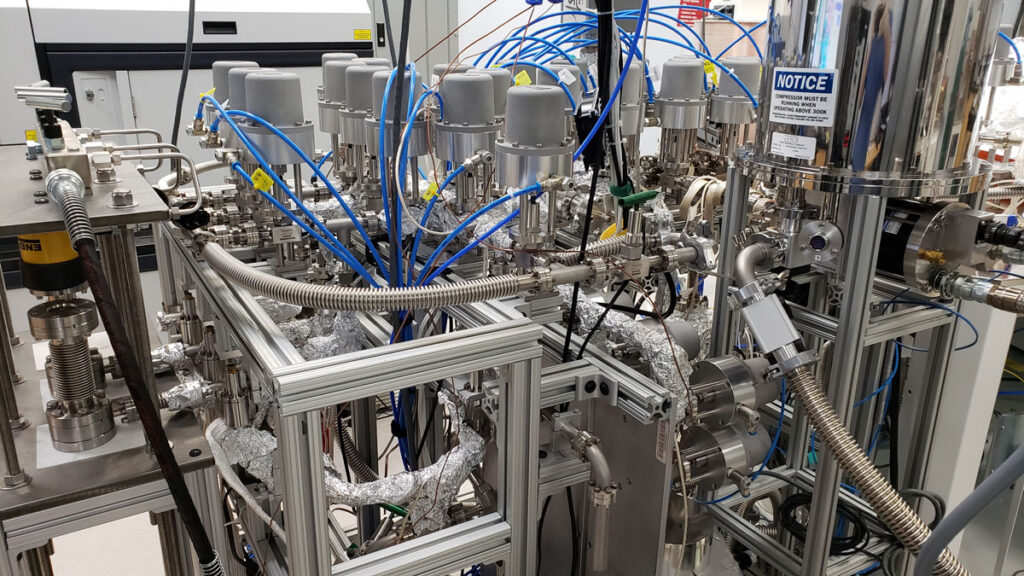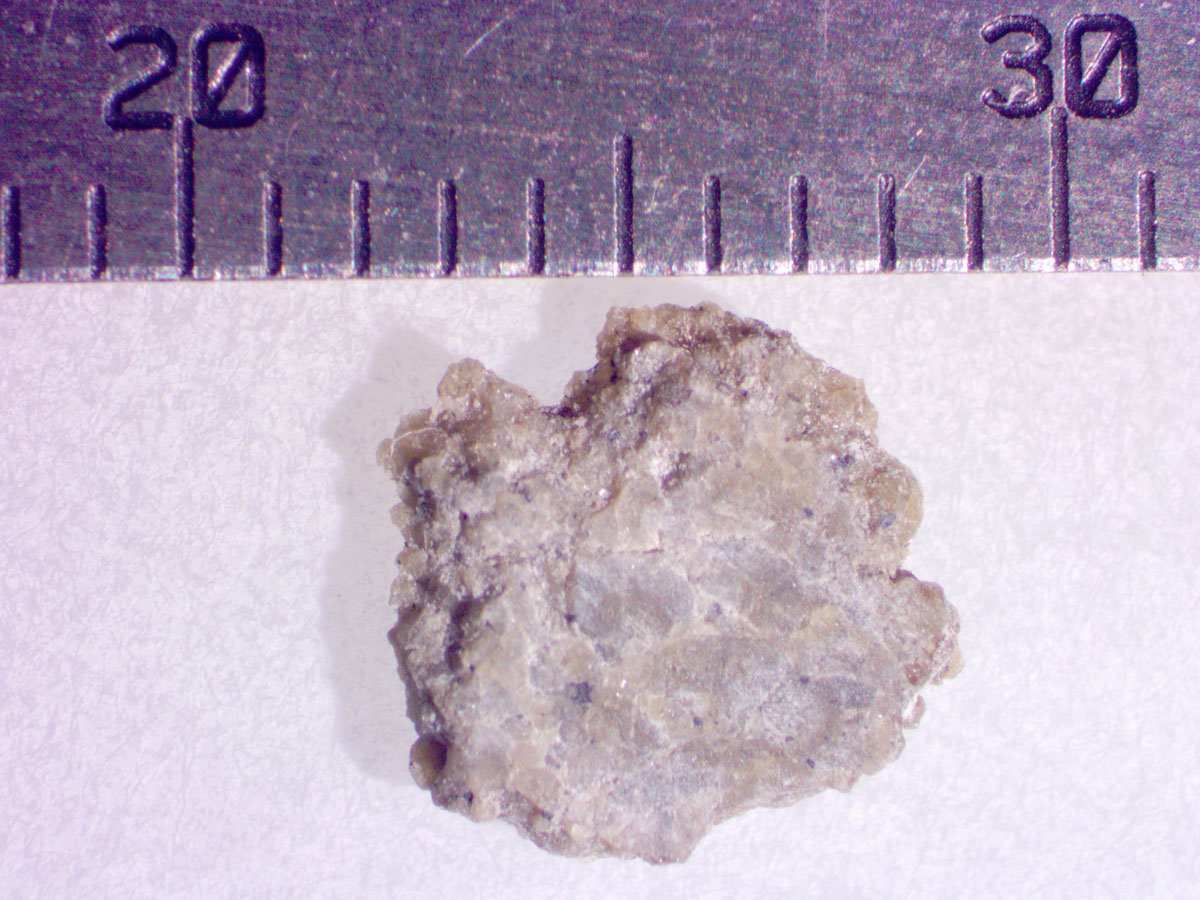A piece of Mars that fell to Earth more than 2 centuries ago is telling planetary scientists a little about how the Red Planet was born. A recent analysis of the meteorite showed that volatile elements in the planet’s interior were deposited by primitive meteorites, whereas those in the atmosphere were accreted from the last wisps of the solar nebula—the cloud of gas and dust that gave birth to the Sun.
“What we found is just the opposite of more classic models,” said Sujoy Mukhopadhyay, a professor at the University of California, Davis, and coauthor of the new study. “They start with solar gases in the interior and add the chondritic gases later on, toward the end of planet formation.”
Mukhopadhyay and lead author Sandrine Péron, currently a fellow at ETH Zürich, used new analytic techniques to parse the relative abundances of krypton isotopes contained in tiny bubbles in the Chassigny meteorite, which fell in northeastern France in 1815.
“Previous work, with noble gases and other materials, like water, showed that it’s effectively recording the interior mantle composition—it didn’t look like the surface composition of Mars.”
“A lot of groups have worked on Chassigny—it’s not a new meteorite,” said Mukhopadhyay. “Previous work, with noble gases and other materials, like water, showed that it’s effectively recording the interior mantle composition—it didn’t look like the surface composition of Mars.”
Earlier studies used xenon and other elements to try to understand how and when Mars acquired its volatiles—hydrogen, carbon, oxygen, nitrogen, and the noble gases. There’s a difference in the ratios of the different isotopes of these elements in the Sun (and, by inference, the solar nebula) and in chondrites—primitive meteorites that formed as dust grains glommed together as the solar system was taking shape.
These earlier studies of Chassigny found a composition that resembled the Sun’s, suggesting that Mars acquired volatiles first from the solar nebula, with meteorites adding their contribution later on. Yet the results weren’t clear enough to settle the matter.
Focusing on Krypton
“Krypton separates out really nicely. There’s a very clear separation between what the Sun’s contribution is and what the chondritic contribution is.”
Mukhopadhyay and Péron decided to focus on krypton, which had received little attention in the earlier work. “When you look at the isotopic fingerprint of xenon, there’s only a very tiny difference between the chondritic and solar gases,” Mukhopadhyay said. “But krypton separates out really nicely. There’s a very clear separation between what the Sun’s contribution is and what the chondritic contribution is,” with chondritic isotopes heavier than solar isotopes.
Earlier researchers had skipped krypton in part because it’s less abundant than xenon and other elements, so it’s more difficult to separate its isotopes. In addition, cosmic rays and material from Earth’s atmosphere can mask a meteorite’s original isotopic composition. “Krypton has been an underutilized tool in the past [because] we didn’t have the tools to resolve these small isotope excesses from air and cosmogenic noble gases,” said Michael Broadley of the Université de Lorraine in France, who wasn’t involved in this study but has conducted similar isotopic studies of Earth’s mantle.

The California team used a new analytic method at the University of California, Davis’s Noble Gas Laboratory to provide more precise krypton measurements. The researchers heated two small samples of the meteorite with a laser, beginning at 280℃ and stepping up to 1,570℃. They then used a high-resolution mass spectrometer to separate the krypton isotopes.
“We found that the krypton composition doesn’t look at all like the composition in the Sun or the Martian atmosphere. But it matches beautifully with the carbonaceous chondrites that we see today.”
“We found that the krypton composition doesn’t look at all like the composition in the Sun or the Martian atmosphere,” said Mukhopadhyay. “But it matches beautifully with the carbonaceous chondrites that we see today.”
That discrepancy led Mukhopadhyay and Péron to conclude that the Martian interior received most of its volatiles from chondritic meteorites, which pounded the newly forming planet relentlessly. If the surface formed a magma ocean, it must have cooled and solidified quickly, allowing Mars to accrete material from the remnant solar nebula, which contributed to the atmosphere.
“Both interior and atmospheric gases were accreted before the nebular gas dissipated, on a timescale of ~4 Myr [million years], due to radiation from the early Sun,” they wrote in the new paper.
Broadley agreed the scenario is plausible, although he said it will take some work to explain how the low Martian gravity managed to hold onto the planet’s early atmosphere as it was being bombarded by both solar radiation and meteorite impacts. “So why the Martian atmosphere has a solar [composition] remains a mystery,” he said.
Accreting from Meteorites from the Get-Go
The finding could have implications for the formation of Earth and the solar system’s other rocky inner planets. “I wouldn’t directly say this is what happened to all the inner planets, but if Mars was accreting chondritic volatiles, then all the inner planets must have been accreting chondritic volatiles from the get-go,” Mukhopadhyay said.
“Growing planets may have been more retentive of the volatiles delivered trapped in the meteoritic building blocks that accreted together to form the planets,” Broadley added.
Still, Mukhopadhyay noted that this is just one analysis of one meteorite. “We’re very mindful it’s a single observation, so Chassigny by itself may not capture the entire story,” he said.
He and Péron plan to analyze additional Mars meteorites, although their destructive techniques make it difficult to acquire additional samples. In addition, no other known meteorites are clearly from the planet’s interior. Mukhopadhyay said, however, that if one “shows even a little bit of an interior signature, we can nail that down.”
—Damond Benningfield, Science Writer

